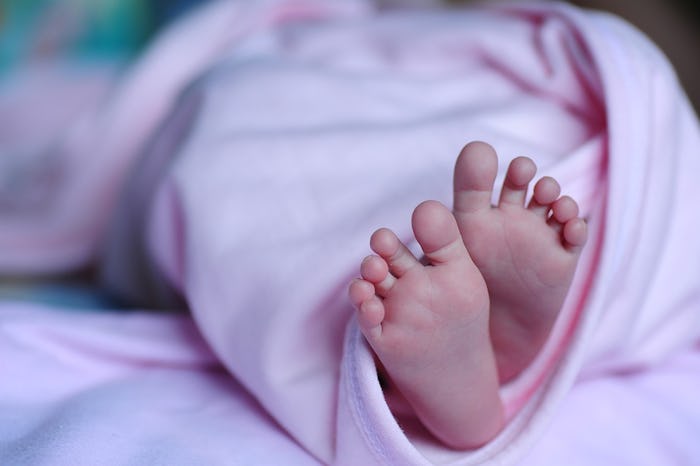The first days after bringing your baby home are usually filled with a lot of exhaustion, discovery, and love (in no particular order.) As much research as you do beforehand, nothing can truly prepare you for the experience of finally having your long-awaited baby at home with you. However, you probably did your fair share of reading up on life after baby before you went into labor, and in your research you've probably heard about something called the "moro reflex." Once your baby gets home, you'll definitely know what it is. But, on a technical level, what is the moro reflex and how will it affect your baby?
According to What to Expect, the moro reflex is more commonly known as the startle reflex. It's the jerky movements your baby makes when they're moved from one place to another, or when they hear an unexpectedly loud noise. You'll probably notice it most when you lay your baby down in their bassinet or swing. If they're not swaddled, they may flail their arms out wide, clench their fists, and tighten their muscles up, like their preparing to fall. Some babies may even cry during these moments.
Although it isn't harmful for your baby, it can be alarming to witness, and even frustrating when the reflex causes your baby to wake up after laying them down. Healthline suggests keeping your baby as close to your body as possible when laying them down, to minimize the amount of time they'll feel the "falling" sensation. Similarly, swaddling your baby can drastically minimize their startle reflex.
Most babies outgrow the moro reflex by three to six months, as they gain more control over their body. As Healthline suggested, parents should encourage their baby to stretch their arms and legs freely for periods of time, as it helps them become more familiar with their movements and surroundings.
If you notice that your baby isn't displaying the moro reflex on one or both sides, be sure to mention it to your pediatrician so they can rule out injury or nerve damage.
